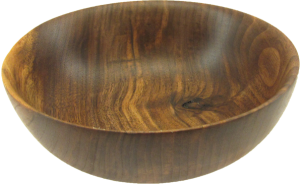Practice Woodturning A Basic Walnut Bowl
by Alan Stratton on Friday, May 22nd, 2015 | 2 Comments
 May also be viewed on YouTube.
May also be viewed on YouTube.
I contributed a woodturning experience to a church youth auction to raise money for youth summer activities.
In preparation, I’m turning a bowl similar to what I’ll have the auction winner turn – with some exceptions.
They will turn a softer wood like cedar. This one is hard walnut with some rot veins in it.
So much turning is second nature to me now, I want to review the basic process for turning a small bowl to be ready to coach a newbie again.
Alan,
Thanks for another terrific video! I’m always curious about your use of CA glue on turnings. Any sense of how long you need to wait for it to cure to not be concerned about any safety risk of inhaling dust with uncured glue? I also wonder about how soon before the turning is finished you apply the glue. To what depth do you think it remains effective to stabilize the turning? I’m sure it soaks in, and must be variable depending upon the species., but any rule of thumb? Thanks!
Lou
Lou,
Great question on curing. From my experience, when it is hard, it is cured. However, if used where it penetrates or forms a thicker layer, it’s hard to tell when it has completely cured. I have treated wood, thought that it was cured, and found little strings of CA glue growing out of a spinning turning or worse yet, little droplets of glue on my shirt or hair. Another reason to wear a full face shield. And these were after using an accelerator. In these cases, I’ve starting waiting 2-3 hours or better yet overnight before proceeding.
Depth, it’s hard to tell how deep it penetrates. I have cut away CA and had to reapply it. Since it can cure and dry, there are too many variables to predict.
So, if more than a small area, I’d suggest a stabilizing treatment than you can rely on to penetrate and harden.
Rule of thumb: Big or deep – wait a lot longer than you expect.